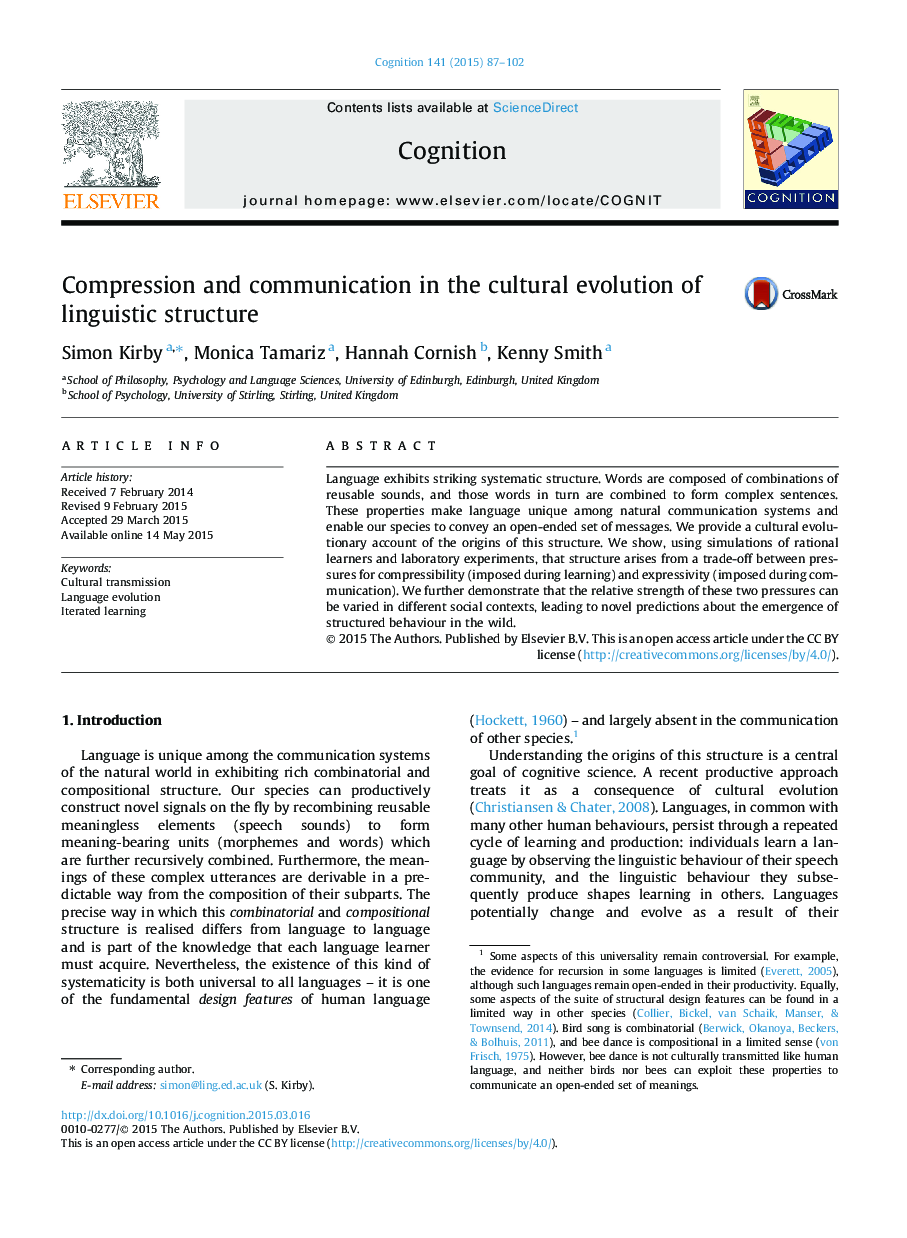| Article ID | Journal | Published Year | Pages | File Type |
|---|---|---|---|---|
| 7286946 | Cognition | 2015 | 16 Pages |
Abstract
Language exhibits striking systematic structure. Words are composed of combinations of reusable sounds, and those words in turn are combined to form complex sentences. These properties make language unique among natural communication systems and enable our species to convey an open-ended set of messages. We provide a cultural evolutionary account of the origins of this structure. We show, using simulations of rational learners and laboratory experiments, that structure arises from a trade-off between pressures for compressibility (imposed during learning) and expressivity (imposed during communication). We further demonstrate that the relative strength of these two pressures can be varied in different social contexts, leading to novel predictions about the emergence of structured behaviour in the wild.
Related Topics
Life Sciences
Neuroscience
Cognitive Neuroscience
Authors
Simon Kirby, Monica Tamariz, Hannah Cornish, Kenny Smith,
